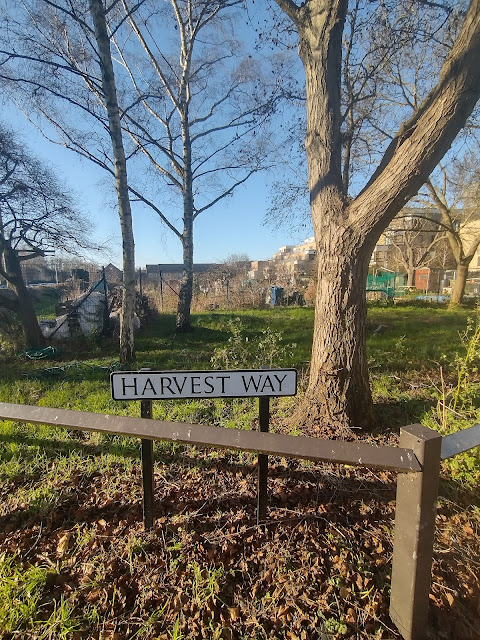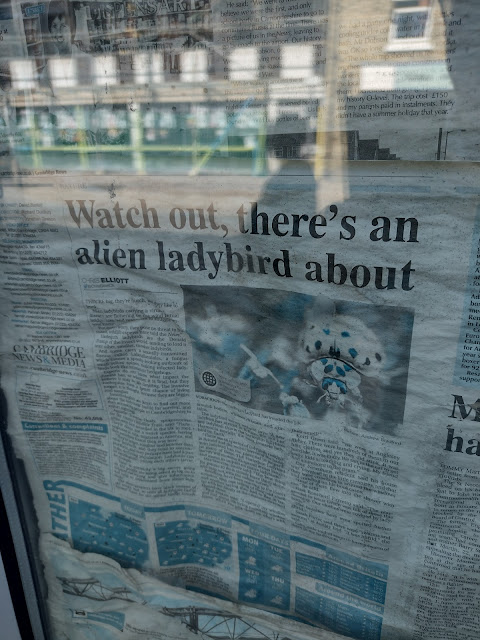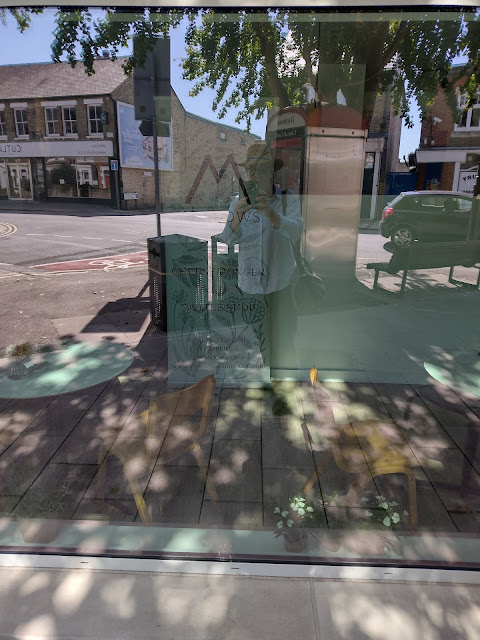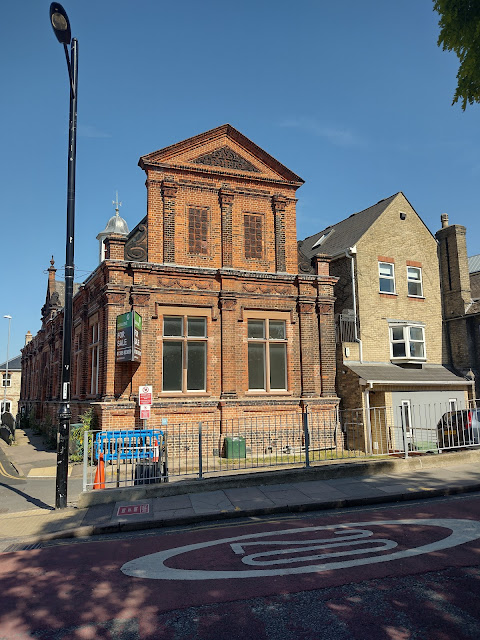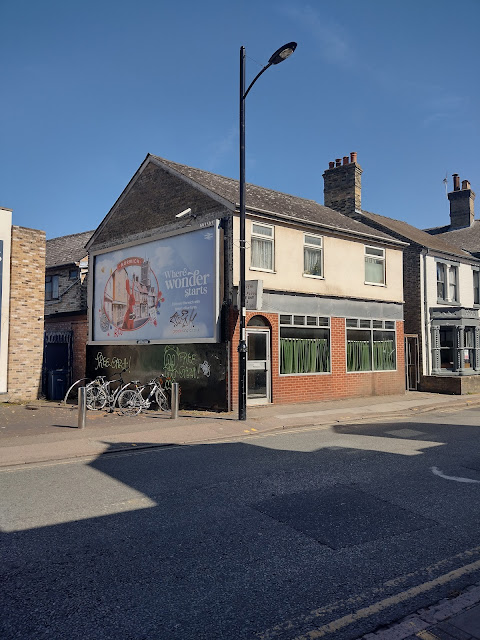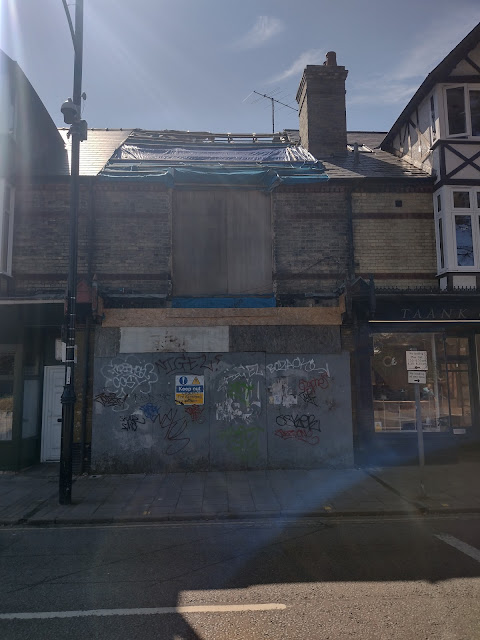At the fag end of 2023 the current Housing Secretary, Michael Gove, announced the formation of a new Development Corporation to oversee the expansion of Cambridge and the building of 'northwards' of 150,000 homes. This dwarves the figure of 50,000 previously identified in the Greater Cambridge Local Plan. Gove promised to reveal more about how the water supply issues would be dealt with later. Given that the Conservatives are almost certain to finally be given the heave ho by the electorate later this year, it seems more than likely that this 'vision' won't pan out quite as advertised. But Gove's plans are not entirely new and seem like an on-steroids extension of existing ones. Whatever happens, Cambridge is set to see significant expansion and development at an ever increasing pace. Gove's 'vision' is 'for a new urban quarter – one adjacent to the existing city – with
beautiful Neo-classical buildings, rich parkland, concert halls and
museums providing homes for thousands.... accompanied by
further, ambitious, development around and in the city to liberate its
potential with tens of thousands of new homes'. A seemingly intentionally vaguely defined idea combining faux-Victoriana and Silicon Valley sprawl, with the sole purpose being the expansion of the life science and tech economy. That's what the statement brought to my mind anyway.
We will have to wait and see exactly the future city will look and feel like. But development has been gathering pace for some time. There are a number of proposals and plans already in motion that were dreamt up long before Gove came up with the plan for a 'Development Corporation'. A term which harks back to the utopian idealism of the New Town period. However, unlike that period, things like council housing, civic centres, public art, community, essential infrastructure and services are not things that look like they are high on the agenda.
While it was easy to be skeptical about Gove's announcement, it gave me the kick up the arse I needed to think about documenting some of the places currently marked for development before they are altered beyond recognition or disappear altogether.
The first site I decided to visit and the destination of the first official walk of the year, was Elizabeth Way Roundabout. This is located at an entry point to the city centre and the central feature of what has been termed the 'Eastern Gate', an area more likely known to locals as 'the town end of Newmarket Road'. The City Council's Eastern Gate 'supplementary planning document' (SPD), which looks to have been produced around 2011, gives a good overview of the area and has some good maps. But crucially, it shows that over ten years ago plans were already afoot to transform the area. It calls Elizabeth way Roundabout and its underpasses, 'unpleasant and hostile'. Later its says the roundabout 'lacks the qualities of a positive gateway into the city and severely limits pedestrian and cycle movements'. Part of the strategy suggested was to remove the underpasses and remodel the junction. More recently plans to do just that have been consulted on as part of wider development plan called the 'Eastern Access Project'. The Eastern Access Project covers the length of Newmarket Road to East Barnwell, where significant plans have just been proposed. It seems likely that the Elizabeth Way roundabout underpass will be filled in, with the surface remodeled into a 'dutch' style roundabout with surface cycle lanes and pedestrian crossings.
The roundabout and Elizabeth Way Bridge, which extends Northwards from the roundabout to cross the river, is an unusual site (and sight) for Cambridge in its concrete enormity. Cambridge is a bit low on underpasses and 60s/70s brutalist concrete structures of any kind. It is probably because of this that I have a possibly irrational fondness for the roundabout and it's underpass. When I was a kid, I remember having a perception that other towns and cities were made up of underpasses, black tar stained railway bridges, scuffy back alleys, caffs and brutalist concrete offices, flats and road systems. I remember sometimes having the feeling that I was not living in a proper city because Cambridge lacked these things and I was missing out. My perception was no doubt based on a combination of things I'd seen from the car window when going on holiday with my parents and television programmes from the late 70s and early 80s set in urban environments, like Grange Hill and The Sweeney. So for me at least, the roundabout is a site of significant psychogeographic interest. It was difficult to get a photograph that does it justice due to it's size.
I headed down to the underpass from the South West side. Graffiti is a perennial feature of the routes leading in at all four corners. Every now and then, it is whitewashed. But the graffiti soon returns. The standard of graffiti has been getting increasingly poor generally, and most was not worth photographing.
But the first of several Nigels of the day greeted me as continued into the underpass. A deluxe Nigel in purple. 'Nigel' seems to colonise many of the peripheral spaces around Cambridge. The Eastern Gate was a zone in transition and in a liminal phase, waiting for something to happen, as the proliferation of Nigel's in the area made clear.
It was again difficult to get a good photo that fitted it all in. But while I was writing this and doing a bit of googling about the roundabout, I came across the excellent 'Coleridge and Beyond' blog which contained a recent post about the roundabout. It contains photos much better than mine and further information about the roundabout and its murals.
I emerged on the North West side, next to National Tyres which has been there for as long as I remember, but I have a recollection of the logo being in black and white. Beyond this part of a new development, at least one newer than the Eastern gate SPD, came into view.
I followed the path that runs down the side of Elizabeth Bridge towards the river, alongside the development which was on my left. These blocks appear to be student flats. It wasn't made clear if they were any particular sort of students. No signs of a particular college or even the University were evident. The gate I passed was coupled with a residents only sign giving no further clue. I had hoped to cut through the development to investigate further but clearly the public were not welcome.
The other side of the path, there is space beneath the bridge beyond a brown door, which looks like it has not been opened for some time. In the past there were calls to use the space under the bridge as a music venue, among other things. I imagine its mostly been used for storage as it has, to the best of my knowledge, never been opened to the public.
Further along part of the space is being used as a 'hidden' homeless shelter. This was revealed by the Cambridge News in a surprisingly coherent article. It highlights clearly the contrast between those living in the 'luxury'' student accomodation and those in the shelter. A stark microcosm of Cambridge being one of the most unequal cities in the country, with the student and 'luxury' flats in the new development offering views across the river and Midsummer Common and looking down (literally) on those having to exist in the shelter.
Across the road building previously known as Shakespeare House was being renovated and will be rebranded 'Generator'. The previous building was a probably from the 1980s or 1990s so not ancient. Although it had been unremarkable looking enough for me to have trouble remembering what it had looked like before and I had to look it up. Like the buildings that runs along Sun Street next to it, there hadn't been much to notice about it. The new version looks from the intranet computer mock ups a similar prospect, just a more modern version.
Heading back to the roundabout I mooched along Sun Street, which is less of a street and more of a layby. A good portion of this is taken up by another brown office building from the 1980s or 1990s called Dukes Court. Currently it appeared empty and up for lease. At number 6 the letterbox was taped up and the notice board blank.
I lingered under the bridge for a while, and looked up to see a number of cobweb covered lights. These appeared to have been untouched for years. There were no concessions to gentile aesthtics here. The huge concrete posts, ancient looking cobwebs and relentless vibrations of the traffic passing overhead and the metal barrier running beside the river created a waterside experience diametrically opposed to that to be found further along the Cam in both directions within the city boundary. An experience not to be repeated until well out of the City boundary along the river path under the A14 near Horningsea. The environment under the bridge was akin to something from a J G Ballard novel. There were no straw hatted men passing on punts here or tourists gathering on the riverside having picnics. Nobody stopped here, just passed through. I began to feel self conscious loitering as cyclists and joggers passed me as I photographed the cobwebs, which in this space occupied a similar position to the gargoyles and grotesques found carved into college walls, just with less people pointing their phones at them.
I left the scene and came out the other side of the bridge. I turned into Abbey Road to head back up to the roundabout. The street is mainly residential victorian terrace but at the corner of Beach Road is the Abbey House, a 17th century built of the site of the old Barnwell Priory, reputably the site of several hauntings. But I passed this by fairly quickly, distracted by the weathervane on top of the hairdressers at the end of the street. This seemed to symbolise the divide East and West in Cambridge. West pointing into the City and University. East meanwhile, was going out of town to East Barnwell, the most deprived part of Cambridge and also a part due to be redeveloped as part of the Eastern Access Project. That's a blog for another day but suffice to say anything currently existing on Council owned land in the centre of East Barnwell is up for change, while the drive through Macdonald's will remain unaffected.
Instead of descending, I decided to head East along Newmarket Road as the weathervane had directed. I observed the traffic passing by the ex-Rose and Crown pub. The brown 1930s pub building exterior is intact, with the rose and crown symbols incorporated into the brickwork, along side the Greene King figure above the door. The interior of the building is now the offices of a property letting agency. It stands almost opposite the old Bird In Hand pub building across the other side of the roundabout, which I had passed earlier. Both closed pubs appeared portents of potential blandness to come if the Eastern Gate fails to deliver anything more than the filling in of the roundabout, some cycle lanes and the erection of more bland 21st century residential buildings and office space.
On my side of the road, the North side, it was clear things were being allowed to become run down in advance of development. The South side had already seen quite a bit of development and reflected a likely future state. I walked past a sign on a board around a site about to be brought into this Eastern Gate future. It stated stated 'Building your visions, creating reality' alongside an uninspiring computer generated photo of what was presumably to come. Underneath was a Nigel with a backwards question mark added to the end, perhaps expressing both confusion and distain about what was coming.
The Cambridge Odd Fellows District Office, along with Casey House, was one of the few buildings on this stretch not in a state of pre-development dilapidation.
Across the road, I could see the building that replaced the old Five Bells pub and is now occupied by the game studio of Ninja Theory Limited, a company that make computer games and were recently acquired by Microsoft. On the ground floor of the building is the Bird and Worm, which operates as a pub but appears closed at the weekend. I heard somewhere that originally it was just intended for the workers of Ninja Theory, so presumably envisaged as a sort of social club. But does open to the public, although perhaps grudgingly. I've never seen much advertising on social media.
A bit further along is one of the few buildings on the South side that has survived the beige spreadsheet architecture invasion that has taken place there over the last few years. Cambridge Refrigeration Technology has occupied the purpose built premises since 1962 and has its originated from the The Low Temperature Research Station formed in the University in 1937. So part of the Cambridge Phenomena and a place of research and development, while paradoxically having the appearance of something resisting the development that phenomena is currently perpetuating.
Further along, I was amazed to see the former Coopers building was (just) still standing. The faded lettering and distinctive blue tiling were, I thought, things I was probably seeing for the last time. Last I heard an Easy Hotel was due to be built on the site to compliment the Travelodge and Premier Inn across the road, but its taking a while to materialise. I'm not sure if the delay is caused by the developer knocking down the adjacent Victorian house. Apparently it was to be kept and incorporated into the new hotel as part of the approved plans.
Nigel had colonised the site, twice, this time with Tape and some cryptic symbols. Maybe these were protective and there to ward off the coming of the Easy Hotel and the encroachment of more bland development.
They were not pointing hard enough to have prevented the new 'Anglia House' student building next door presenting messages on garish boards covering the windows. 'Take a peak to begin your extraordinary journey with us' was a phrase I was having trouble reconciling with student accomodation. Surely students go there to sleep and eat, not to set of on some kind of 'journey'. But then I ruminated on the proliferation of the nauseous expression 'customer journey' that is used by the corporate world to describe even the most basic and mundane transaction or service activity.
The nearest pub in the Eastern Gate area closest to the roundabout and actually still open is the Corner House. Up until a few years back live music happened here but now its all pub and food. Maybe its survival is in part due to people from Anglia House making a 'journey' across the road. One not very far in distance but one leading to a destination most likely miles apart in atmosphere and environment.
Just beyond the pub is a large Tescos, on the site of the old Gasworks. In front is an area with a war memorial where people wait for the bus. The Tescos car park is extensive, but has paths along each side and around the back that led to the river and the Technology Museum at the old pumping station. This is just beyond the periphery of the 'Eastern Gate' but I had hoped I might get a pint at the outside bar that Calverley's Brewery have in pumping station grounds.
Alas, it was not to be because they were closed, I was too early. I came back the other side of Tescos along Cheddars Lane. 'I almost died here' was one of the messages delivered by the graffiti infested wall on the edge of a light industrial area. I wondered whether to take this literally or if it was meant as a comment reflecting the general state of the area in which I stood
I turned off at Coldhams Lane to follow the back of the Travelodge on Harvest Way, which appropriately features some allotments sandwiched between the Travelodge and New Street.
Further along New Street I looked for the old blue Lacon's Rodney Stores building. This had disappeared since the sojourn I documented here where I first noticed it. I hadn't noticed the subsequent disappearance until now. It's replacement was another typically 21st century building, presumably containing flats. Next door, part of Mackay's still existed. The Metal Warehouse's metal shutter contained some half hearted graffiti. Mackay's have recently announced they will be relocating out of town, which will free up space that will presumably become inhabited by similar buildings to the one on the right.







































